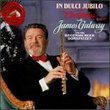| All Artists: Lutoslawski, Mutter, Moll, BBC Title: Piano Concerto (Dig) Members Wishing: 0 Total Copies: 0 Label: Deutsche Grammophon Release Date: 11/12/2002 Genre: Classical Style: Symphonies Number of Discs: 2 SwapaCD Credits: 2 UPC: 028947158820 |
Search - Lutoslawski, Mutter, Moll :: Piano Concerto (Dig)
CD DetailsSimilarly Requested CDs
|
CD ReviewsBLUFFER'S GUIDE TO LUTOSLAWSKI DAVID BRYSON | Glossop Derbyshire England | 12/13/2005 (5 out of 5 stars) "It would probably be fair to say that I have been hearing this and that by Lutoslawski all my life and that it has all gone in one ear and out of the other. What is indisputably true is that this disc marks his debut in my musical collection and the first time I have listened to him with proper attention. Anything I have to say on the subject is therefore addressed to those (presumably many) whose acquaintance with him is on the level of my own and to those (probably a lot fewer) who are interested in improving that state of affairs. I found these three works surprisingly easy to come to terms with even at a first hearing. The quality of the performances has a lot to do with that - the composer himself is in charge of the top-notch BBC Symphony Orchestra, two of the works have their dedicatees as soloists, and the third has the soloist chosen by its dedicatee for its first performance. The recorded sound is outstandingly good too - quite recent, from 1988/9, with two of the recordings done in the Walthamstow Town Hall, one of the finest recording studios in the world. However, proper credit to the music itself. There is a pleasant variety to the sound with a lot of light and air in the orchestration, particularly right at the start of the disc where the producer has thoughtfully sequenced the piano concerto, rightly identified by the liner-note writer as being the nearest of the three pieces to classical tonality in its idiom. Another thing that I liked about the music is that there is some real sense of movement about it. A predilection for the andante tempo set in among composers as early as the mid-19th century, it has clung to classical music with the grim tenacity of The Old Man of the Sea ever since, and Lutoslawski has managed to shake it off. All this let me hear some genuine lyricism - not like Schubert or Verdi or Brahms but lyricism all the same - in the striking Largo movement of the Partita. I would say that the piano concerto is a far easier nut to crack than Schoenberg's, and probably little if at all harder in that respect than Britten's. Having been put at my ease to that extent, I was the more receptive to the two violin works which are, I suppose, a little more challenging to the listener than, say, Schoenberg's chamber symphonies but a lot less demanding than his violin concerto. Naturally one looks for guidance in the liner-note. This is not bad up to a point, but don't entertain excessive hopes. There is some useful background material, but rather a lot of it simply tells us what we can perfectly well hear for ourselves. `The third movement begins with the soloist alone' I read for instance `first in a recitative-like introduction and then in an extended cantabile melody which is resumed at the end of the movement, after a contrasting central section with orchestra' as the third movement began with the soloist alone and continued as advertised up to, through and after a contrasting central section with orchestra. There are some interesting remarks on the compositional techniques used, but even these seem to make rather a lot of not very much. Lutoslawski deployed something that he termed `chain form', as an example, in which `...different, unrelated strands...are overlapped...like links in a chain'. Big deal, I thought to myself. How riveting. Now I shall know Lutoslawski's music when I next hear it with its different strands overlapped like links in a chain. However we are also told to find this characteristic in the finale of the piano concerto which is in a very simple variation-form known as a passacaglia, and whatever can be said about variations, in a passacaglia or elsewhere, one thing they can emphatically not be called is unrelated. Again, we are to hear `complex textures which could not be achieved in any other way, but without any loosening of the composer's overall control...' How does he tell, one wonders. With the third millennium there seems to be a definite reaction against some of the intellectualising that overtook music (classical music that is to say - popular music, music that millions actually listen to, took no notice) during the 20th century. I sensed this recently in a slightly coat-trailing short essay by Stephen Hough that comes with his fine disc of York Bowen, but I had started to become aware of it earlier. The way of such counter-revolutions is that they tend to go too far, and I hope we don't throw the baby out with the bathwater. I enjoyed these works of Lutoslawski, I'm not going to be alone in that I'm quite sure, but before long they may have the status of period-pieces if the new trend continues." Little bits of brilliance scattered among a lot of hobbled m Christopher Culver | 07/29/2006 (3 out of 5 stars) "This DG disc, part of its "Echo 20/21" series of contemporary music reissues, collects three pieces by Witold Lutoslawski written in the last ten years of his life. Two are for virtuoso violinist, here Anne-Sophie Mutter, while the third is his piano concerto, with Krystian Zimerman in the soloist role. In all, Witold Lutoslawski conducts the BBC Symphony Orchestra.
I have mixed feelings about Lutoslawski's final phase, and think that he abandoned a rich style for something considerably more predictable. Lutoslawski's middle period, dating from "Jeux Venitiens" of 1960 to the "Symphony No. 3" of 1983, was marked by two striking techniques. The first was a heavy use of limited aleatorism, by which individual instrumentalists were free to play their parts as they liked, forbidden from trying to sync with their fellow performers. The counterpoint gained from this was rich and powerful. Lutoslawski's second technique was the selection of pitches from various twelve-note chords, which resulted in a brilliant chromaticism that sounded much warmer than the music of the serialists. After his third symphony, however, Lutoslawski moved away from all this. While aleatorism remained, it began to contribute little to the music and in most places seems a mere formality, whereas in the splendid String Quartet of 1965 and the awesome Symphony No. 2 of 1968 it was an integral part of the work. Total chromaticism disappeared, and instead the harmonies sound as restricted as neoclassicism or neoromanticism. This process of limitation took a while to come to fruition. In "Chain 2" (1984), a "dialogue for violin and orchestra" one still feels that the form is boundlessly expanding, avoiding any stale constraints of classicism. The title refers to Lutoslawski's late technique of beginning new sections before the last is fully completed, given the work a certain momentum that propels the music forward. While emphatically not a violin concerto (he was at work on a piece earning such a name in his final weeks), Lutoslawski's love for the instrument is so great that the work tours all manner of violin technique and mood. I think "Chain 3" for chamber orchestra is a better exposition of this form, but this follows not far behind. Lutoslawski was so impressed with Anne-Sophie Mutter's performance in the premiere of "Chain2 " that he orchestrated a work originally for violin and piano especially for her. The resulting "Partita" (1988) immediately strikes the listener who has followed Lutoslawski's work chronologically as strait-jacketed. The occasionally interludes for solo violin and piano don't are interesting. But that doesn't change the fact that the main of the work finds inspiration in Baroque music, and even if there are no major or minor keys, the work still approximates a sort of stale tonality. The "Concerto for piano and orchestra" (1990), written for Zimerman. begins with about forty seconds of excellent vintage Lutoslawski, but ends up being the most unadventurous of the pieces here. The solo part is based mainly on octaves and thirds, giving the music a strong tonal centre. There's more of an emphasis on flutterly little motifs than earlier Lutoslawski, and a dramatic arc that speaks more of romanticism than the complexity of the 20th century. I shouldn't be too hard on the piece, it's decent light fare, but if I were to listen to Lutoslawski attentively, this would not be my selection. Zimerman's playing here is seemingly flawless, full of confidence. Of the two other performances I've heard, Paul Crossley's on Sony (with the L.A. Philharmonic and Salonen) is just as fine, while the recording on Naxos is just a disaster. The works here are not unlistenable. However, they are a coming down after the height of his middle period. Discover Lutoslawski through the Second Symphony, the Cello Concerto, or the Third Symphony first." |

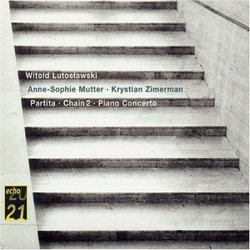
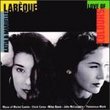
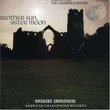


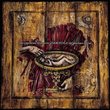

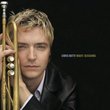
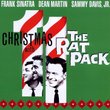
![Across The Universe [Deluxe Edition]](https://nationalbookswap.com/cd//m/51/1251/1241251.jpg)
